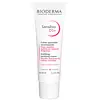What's inside
What's inside
 Key Ingredients
Key Ingredients

No key ingredients
 Benefits
Benefits

 Concerns
Concerns

 Ingredients Side-by-side
Ingredients Side-by-side

Water
Skin ConditioningGlycerin
HumectantC15-19 Alkane
SolventC10-18 Triglycerides
EmollientDipropylene Glycol
HumectantGlyceryl Stearate Citrate
EmollientHelianthus Annuus Seed Wax
Skin ConditioningPentylene Glycol
Skin ConditioningSqualane
EmollientSucrose Stearate
EmollientCorn Starch Modified
AbsorbentCocos Nucifera Oil
MaskingMaltooligosyl Glucoside
Skin ConditioningGlyceryl Caprylate/Caprate
EmollientSclerotium Gum
Emulsion StabilisingGlycyrrhetinic Acid
Skin ConditioningHydrogenated Starch Hydrolysate
HumectantXanthan Gum
Emulsifying1-Methylhydantoin-2-Imide
Skin ConditioningPhytosphingosine
Skin ConditioningSodium Citrate
BufferingCitric Acid
BufferingMannitol
HumectantXylitol
HumectantO-Cymen-5-Ol
AntimicrobialBenzotriazolyl Dodecyl P-Cresol
UV AbsorberRhamnose
HumectantTocopherol
AntioxidantHelianthus Annuus Seed Oil
EmollientWater, Glycerin, C15-19 Alkane, C10-18 Triglycerides, Dipropylene Glycol, Glyceryl Stearate Citrate, Helianthus Annuus Seed Wax, Pentylene Glycol, Squalane, Sucrose Stearate, Corn Starch Modified, Cocos Nucifera Oil, Maltooligosyl Glucoside, Glyceryl Caprylate/Caprate, Sclerotium Gum, Glycyrrhetinic Acid, Hydrogenated Starch Hydrolysate, Xanthan Gum, 1-Methylhydantoin-2-Imide, Phytosphingosine, Sodium Citrate, Citric Acid, Mannitol, Xylitol, O-Cymen-5-Ol, Benzotriazolyl Dodecyl P-Cresol, Rhamnose, Tocopherol, Helianthus Annuus Seed Oil
Water
Skin ConditioningCocos Nucifera Oil
MaskingPropylene Glycol
HumectantCaprylic/Capric Triglyceride
MaskingDimethicone
EmollientGlycyrrhetinic Acid
Skin ConditioningSorbitan Sesquioleate
EmulsifyingPiroctone Olamine
PreservativeGlyceryl Undecylenate
EmollientClimbazole
AntimicrobialMannitol
HumectantXylitol
HumectantRhamnose
HumectantFructooligosaccharides
HumectantLaminaria Ochroleuca Extract
Skin ConditioningCetyl Alcohol
EmollientCarbomer
Emulsion StabilisingSclerotium Gum
Emulsion StabilisingSodium Hydroxide
BufferingPhenoxyethanol
PreservativeWater, Cocos Nucifera Oil, Propylene Glycol, Caprylic/Capric Triglyceride, Dimethicone, Glycyrrhetinic Acid, Sorbitan Sesquioleate, Piroctone Olamine, Glyceryl Undecylenate, Climbazole, Mannitol, Xylitol, Rhamnose, Fructooligosaccharides, Laminaria Ochroleuca Extract, Cetyl Alcohol, Carbomer, Sclerotium Gum, Sodium Hydroxide, Phenoxyethanol
 Reviews
Reviews

Ingredients Explained
These ingredients are found in both products.
Ingredients higher up in an ingredient list are typically present in a larger amount.
Cocos Nucifera Oil is obtained from the kernels of the coconut fruit. In other words, this is coconut oil.
Coconut Oil is rich in fatty acids with lauric acid making up the majority of these. It also contains linoleic acid. Due to this high fatty acid content, coconut oil helps trap moisture and soften skin.
Despite being antibacterial, coconut oil may not be great for acne-prone skin. It is comedogenic and may clog pores. This ingredient may not be safe for malassezia or fungal acne.
Note: Coconut Oil should not replace your sunscreen for UV protection. Studies show it only blocks about 20% of UV.
This oil is non-volatile and has a light scent.
The term 'fragrance' is not regulated in many countries. In many cases, it is up to the brand to define this term. For instance, many brands choose to label themselves as "fragrance-free" because they are not using synthetic fragrances. However, their products may still contain ingredients such as essential oils that are considered a fragrance.
Learn more about Cocos Nucifera OilGlycyrrhetinic acid is a compound found in licorice. It has skin conditioning, skin soothing, antibacterial, and antioxidant properties.
Not only is this a great ingredient for soothing inflammation, studies show this compound is effective at protecting skin against UV-B induced damage.
Fun fact: This ingredient is also used to mask the bitter taste of medicine.
Learn more about Glycyrrhetinic AcidMannitol is a sugar alcohol. It is a humectant and moisturizes the skin. In vitro (not tested on a living organism), mannitol displays antioxidant properties.
When found in aqueous solutions, mannitol tends to become acidic. This is because it loses a hydrogen ion. This is why mannitol can often be found with pH adjusting ingredients, such as sodium bicarbonate.
Fun fact: Mannitol can be found in foods as a sweetener. It can be naturally found in mushrooms, algae, fruits, and veggies.
Learn more about MannitolWe don't have a description for Rhamnose yet.
Sclerotium Gum is a polysaccharide gum made by the fungus, Sclerotium rolfssii. It is similar to xanthan gum.
In cosmetics, Sclerotium Gum is used to thicken the texture and to help stabilize other ingredients.
As an emulsifier, Sclerotium Gum helps prevent ingredients from separating, such as water and oil.
Learn more about Sclerotium GumWater. It's the most common cosmetic ingredient of all. You'll usually see it at the top of ingredient lists, meaning that it makes up the largest part of the product.
So why is it so popular? Water most often acts as a solvent - this means that it helps dissolve other ingredients into the formulation.
You'll also recognize water as that liquid we all need to stay alive. If you see this, drink a glass of water. Stay hydrated!
Learn more about WaterXylitol is a humectant and prebiotic. It can help with dry skin.
In studies, xylitol has been shown to improve dry skin. It decreased transepidermal water loss, or when water passes through the skin and evaporates. Xylitol also showed to help improve the biomechanical properties of the skin barrier.
The prebiotic property of xylitol may also help reinforce our skin's natural microbiome. Having a healthy microbiome prevents infection by bad bacteria and helps with hydration.
As a humectant, Xylitol helps draw moisture from both the air and from deeper skin layers. This helps keep skin hydrated.
Xylitol is a sugar alcohol and commonly used as a sugar substitute. It is naturally occurring in plants such as strawberries and pumpkin.
Learn more about Xylitol